To start off with and if you had missed it previously, check out the article here covering the details of Crye’s Gen 1 combat shirt:
As before I also need to mention the Crye review pages over at Military Morons. MM is an excellent resource, particularly for the little details that I am unsure of and might have otherwise been lost to time:
https://www.militarymorons.com/gear/crye2.html
Another image here of some ‘Objective Force Warrior’ prototype gear as it depicts some of the very earliest Crye Associates combat clothing prototypes (the precursor company to Crye Precision). I am unsure if these were made in Desert Tricolour camo purely because the Scorpion pattern that came before Multicam hadn’t been created yet, or just because the US Military was widely issuing Tricolour at the time and this whole loadout was a demonstration for government officials. Unfortunately I do not have access to any of the people who were involved in these programs that saw the transition from the woodland camouflage and belt-gear of the 90s over to the new patterns and PALS gear that marked the 2000s and the beginning of the the Global War on Terror.

The basic outlines of the knee pads shown here are still with us to this day in the G3 and G4 uniforms, though very little else remains of these early designs in current production items. Interesting to note is the extensive use of cordura, shown here in the flat Khaki type colour. The production 1st Generation combat pants feature essentially the same amount of Cordura but it is colour matched to the NY/CO, so it doesn’t stand out as much.
As with the shirt, the primary fabric used in the Gen 1 Combat Pant is a twill 50/50 Nylon/Cotton, whereas the prolific Gen 2 and 3 uniforms used rip-stop NY/CO, which the vast majority of US military issued uniforms have also been made from during the past few decades. Whether this was due to an inability to print or procure a rip-stop Multicam in the early years of the company I am unsure.
The only advantage that twill in general might have to my knowledge is lower cost by comparison to rip-stop, but Crye have never been known to aim at a lower RRP in exchange for lesser overall quality in a product. With that said, the twill used here does look and feel to be of a heavyweight nature and seems to be woven quite thickly, which could have factored in to the decision making process given that the aim here was clearly to produce a very durable and resilient garment. This is perhaps slightly ironic in a way, given that the company’s philosophy as of 2019 has swung drastically towards a prioritisation of minimal weight, somewhat at the expense of long term durability.

The secondary fabric used is Multicam Cordura, which you can see above comprises the lower leg areas of the trousers as well as the knee pad pockets – the seat is not reinforced. The colour differentiation between the materials can usually be discerned once you know what you’re looking for and if you are unsure at all I recommend referencing the prototype picture from earlier on where the solid tan areas are cordura and only the camouflage sections are NYCO. The areas of usage for said cordura are the same on both these G1s and the DCU prototypes.
The image below shows the cordura on the left and lower sections with NYCO in the upper right. Note the diagonal weave creates lines running from top left to bottom right in the cotton blend fabric.
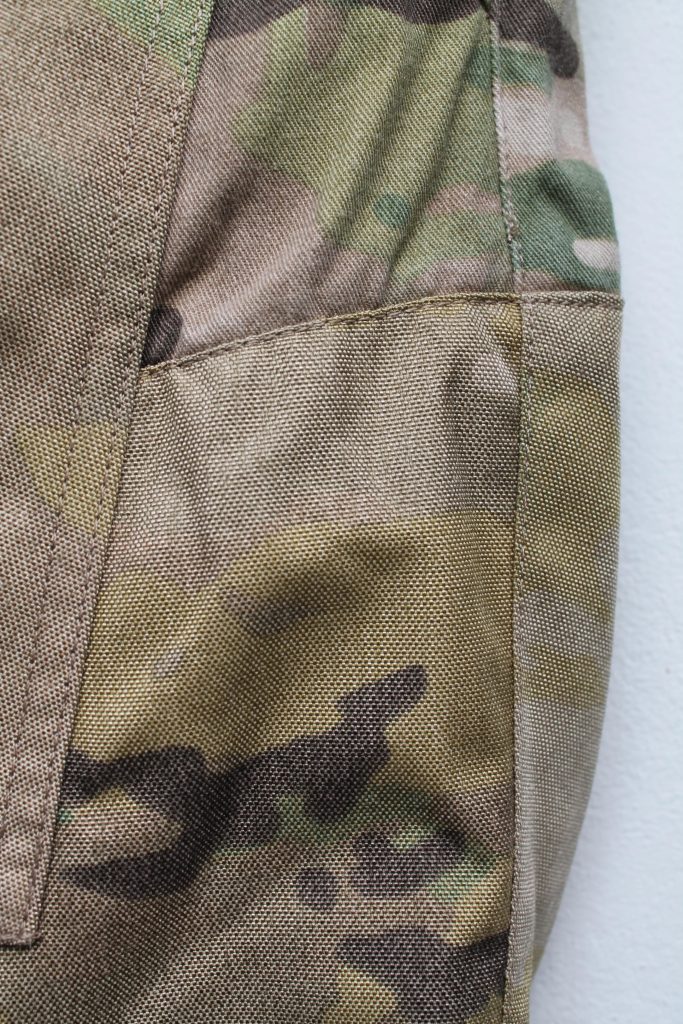
The cordura does not layer over the twill but in fact replaces it entirely wherever it is used. Military Morons states that this fabric is 500D, though I’m a little dubious on that one myself. Given the time period 1000D is more likely and it does feel heavy to my hand, however MM’s information was published at the time these uniforms were still in production and available for sale commercially.
Cordura is highly resistant to both abrasion and tearing of course, but that resilience comes at a cost in weight. Between the use of heavy twill and cordura as well as the smorgasbord of features built in to the G1 combat pant (which will be elaborated on momentarily), this pair of G1s in size 32-Short weighs in at 1178g (2.6lbs) whereas a pair of 32-Regular G3 combat pants only weighs 730g (1.6lbs). Shaving off a full pound of weight from just the trouser alone is pretty significant, especially when viewed within the scope of a dismounted warfighters’ full combat load that might have be carried significant distances.

The 5 belt loops are all made entirely from the same cordura as found on the lower legs and knee pad pockets. The front left belt loop has an ITW plastic D-ring sewn in for the hanging of small items and while the others do all have similar channels at the bottoms they seem to narrow to be of practical usage. Why the bar-tacking is done at the lower end of each loop when the trouser belt will tend to exert pressure upwards towards the single-line stitching I do not know, though Gen 2 and 3 combat trousers all feature bar-tacking at both upper and lower ends of all their belt loops.

An interesting point to note is that Crye were somewhat pioneering even when it comes down to the sizing options that were available to those purchasing uniforms. As a general rule, it was the military itself that did the R&D in to new gear prior to the turn of the millennium and there was very little private enterprise creating new uniforms or load-bearing kit, certainly compared to now. The tactical gear that was available to civilians was primarily military surplus and surplus uniforms came in wide sizing brackets i.e. the typical Small, Medium and Large with increments of roughly 5″ between waist sizes. Crye offered 2″ waist size increments in line with the civilian clothing market, meaning a potentially much better fit was now available.
The closure above the groin zip is velcro where a button was far more common at the time of production. The zip itself is a plastic coil type from YKK and features a soft plastic noise dampener that is something of a signature of Gen 1s, though these are also seen on a small number of very early Gen 2 pieces. The slider itself contains a piece of sprung metal that inhibits movement of the pull tab, meaning it tends to stay locked pointing either up or down and won’t rattle around and create noise.
While this particular example of the Gen 1 pant is actually in pretty good shape overall with no damage and only slight colour fading the label has unfortunately passed beyond legibility. What remains visible is that the size and shape is overall essentially the same as those labels found on Gen 2 uniforms, with the same type of small size tag protruding underneath, though the colouration is a darker shade of green by comparison to Gen 2s.

Since the two standard pockets you would expect to find located at the front of each hip on a civilian trouser are missing entirely, the first set of pockets we come to are located on the front of the upper thigh area, each of which also plays host to one of the height adjustment straps for the knee pads.
The lower front corner of each pocket flap is permanently stitched down in a similar manner to US issued BDU pants and extra closure is provided in the format of the buckle and webbing that makes up the knee pad height adjuster. This seems strange to me as the height adjustment is lost each time you open the pocket and the wearer has to drag the knee pad back up in order to redo the 1″ side-release buckle and close the flap again, unless the pad is left in the default lowest position.
The main body of each of these pockets is fairly roomy, though with a taller and thinner geometry compared to the fairly square cargo pockets that have been standard on the Gen 2 and 3 combat pants for some time now. The 1st and 2nd images below are of the right and left pocket respectively (when worn) and depict the pleating that is built in to allow for expansion as well as the disconnected male portion of the buckle. The knee pad adjusters have sensibly been moved to the inside of the pants on subsequent designs (i.e. Gen 2 and later) with these external adjusters being a prominent and unusual feature of the Gen 1s that is rarely, if ever, seen on any other military apparel.


The Multicam branding label really hasn’t changed a great deal in all these years.

Another of the notably unusual zips to be found on the G1 combat pant is this ‘waste management’ flap/opening directly between the legs. As shown below the zip goes all the way around from front to back inbetween the legs and creates a significant sized opening. I don’t think I need say more about what the purpose of this feature is.
I would certainly be incredibly interested to hear what feedback might have been given that lead to the inclusion of this specific aspect of the design. CBRN environment applications did spring to mind initially but that does seem like an unlikely consideration. Perhaps a better alternative is in relation to the wearing of belt kit, particularly given the lack of standard trouser pockets at the waist as mentioned previously. The thought process may well have involved the wearer making use of either a belt that is slow and awkward to undo or some sort of armoured or double belt system, any of which could cause issues with relation to the subject at hand.
The zip itself is of the exact same type used for the fly with the exception of the length of course and it has a garage area for stowage of the slider when fully closed.


The next set of pockets is placed on the rear ‘half’ of the pant, if we take the side zips to be the demarcation lines between front and back halves.

Pockets for the knee pads look quite familiar overall. As mentioned previously the construction is of cordura and there is a slightly more structured build to the pad pockets on the Gen 1s where newer generation pad pockets will sit entirely flat. The dimensions of the opening and the outer shape where the pocket is stitched to the pant have basically remained unchanged over the years, even going back to prototypes that predate Gen 1.
The system for retaining the knee pad with the fabric being sandwiched between the edge of the plastic outer cap and inner foam is again unchanged, as is the loop velcro inside the pad pocket that interfaces with hook on the pad itself.

As before, since there cannot be any features which bridge or straddle both front and back halves of the pant lest the side zips be inhibited, the tension adjustment in the area of the knee pads is fully contained within the front half and is completely internal to the trouser. Elastic is used here to simply cinch down the outer diameter of the trouser leg and bring the back face of the pad in closer to the knee and upper shin area.

Both legs can be almost fully opened at the sides via these large gauge, vislon type zips which both feature doubled-up large metal pull tabs and sliders. This allows for extra cooling, access to the knee pad tension adjustment, easier access to boot laces (particularly for high leg boots), easier on/off while still wearing boots and potentially for medical access to any injury sustained to the legs.
Usually this is a design feature you would expect to see on a Softshell, Gore-Tex or Insulating pant (PCU Levels 5, 6 and 7) since those are often layered over the top of other lower body garments and will be donned then removed on the fly as the weather changes .


In the event that either of the side zips should fail these grommets/rounded button holes are sewn in to a few places adjacent to said zips. They are located such that some string or other cordage can be looped through each pair of holes and the split in the leg can be mostly closed up, at least to a satisfactory level such that the wearer’s mobility won’t be badly hindered and until such time as they can get back to a base area and put on some new pants.

Below is a comparison image of the Multicam cordura that was being produced in the early 2000s (lower leg area of these trousers) alongside Multicam 500D that was printed in the region of 2016-17. This is not an ideal comparison of course since the appearance of camouflage material can vary significantly depending on which piece of the roll is cut and sewn in to any given piece of kit and which area of the overall pattern appears on the section of fabric in question, however some general comparisons can be drawn.
It is probably safe to assume the fabric on the left here that is part of the Gen 1 Combat pant is some of the earliest of the large-scale production Multicam fabric, potentially the first iteration of the material that was printed in commercial quantity. It could be argued that it bears a strong resemblance to original Scorpion cordura and that is not outside the realms of possibility, however I could not state that for a fact at the time of writing as I have no other gear in the original Crye Scorpion pattern to check against. By sheer chance the portion of the FirstSpear plate carrier that ended up in the right side of this photo does happen to bear the original Crye Associates horned triangle logo in the upper right corner, contrasted in light green against a section of light tan. Presumably said logo is still printed in to the pattern as an homage of sorts to the origins of Crye Precision and the earliest works of the company.

The elements that have survived from G1 going forward include the increased number of pockets over a standard BDU pant, the knee pad integration system and the structuring around the waistline. Other than that the differences between G1 and G2 are stark to say the least. All cordura was deleted, heavy twill NYCO replaced with a lighter rip-stop, side and groin zips removed, multiple stretch panels added, alterations to stitching methodology and the pocket layout substantially altered to include the addition of more pockets in different locations.
Perhaps the most interesting aspect of the G1 combat pant is the fact it is so significantly different to all the designs that followed it, either from Crye or any other manufacturer of tactical or military type clothing. Contrasting the Gen 1 combat shirt to the Gen 4 shirt we actually see a few similarities, yet the G1 combat pant has very little in common with all subsequent designs and that is the main reason I personally wanted to go in to some depth with this article.
Combining the relative scarcity of these pants coming up for sale and the fact that most people who own them are primarily collectors who put things in to lockers for them never to see the light of day again I wanted to put something together here with plenty of imagery and description that can remain a resource in future years. Also this article will hopefully be an interesting reference for people to see where Crye’s combat apparel line started out and highlight how things have progressed and improved over time.
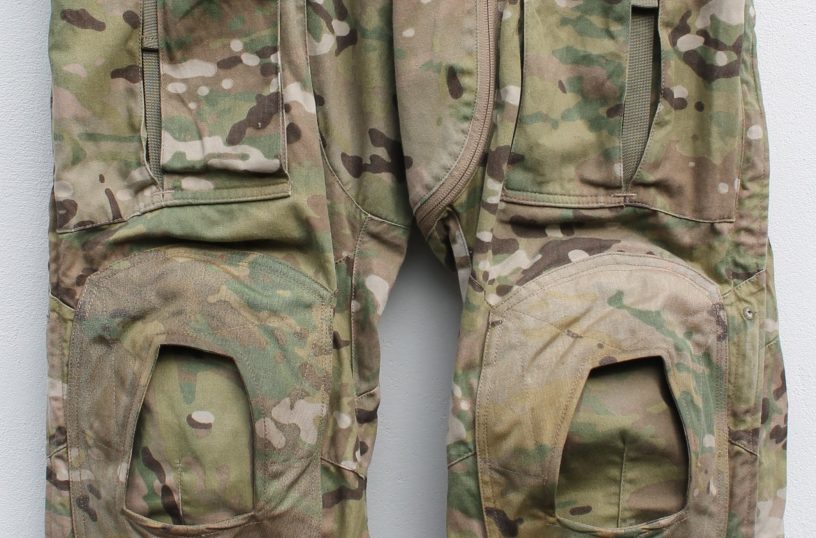
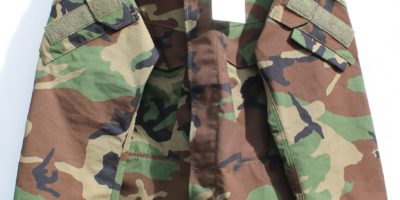
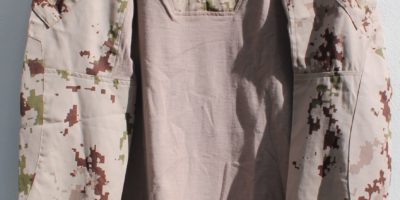
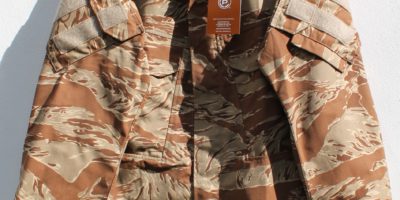
Michal
Have a pair for sale, size 34R, new never worn but without tags and bag. G1 Multicam Combat Pants. I will sell it for 750 $.
johndoe
Are you retarded?
You can buy new for cheaper
TheFull9
Where are you buying Gen 1 cryes fool?